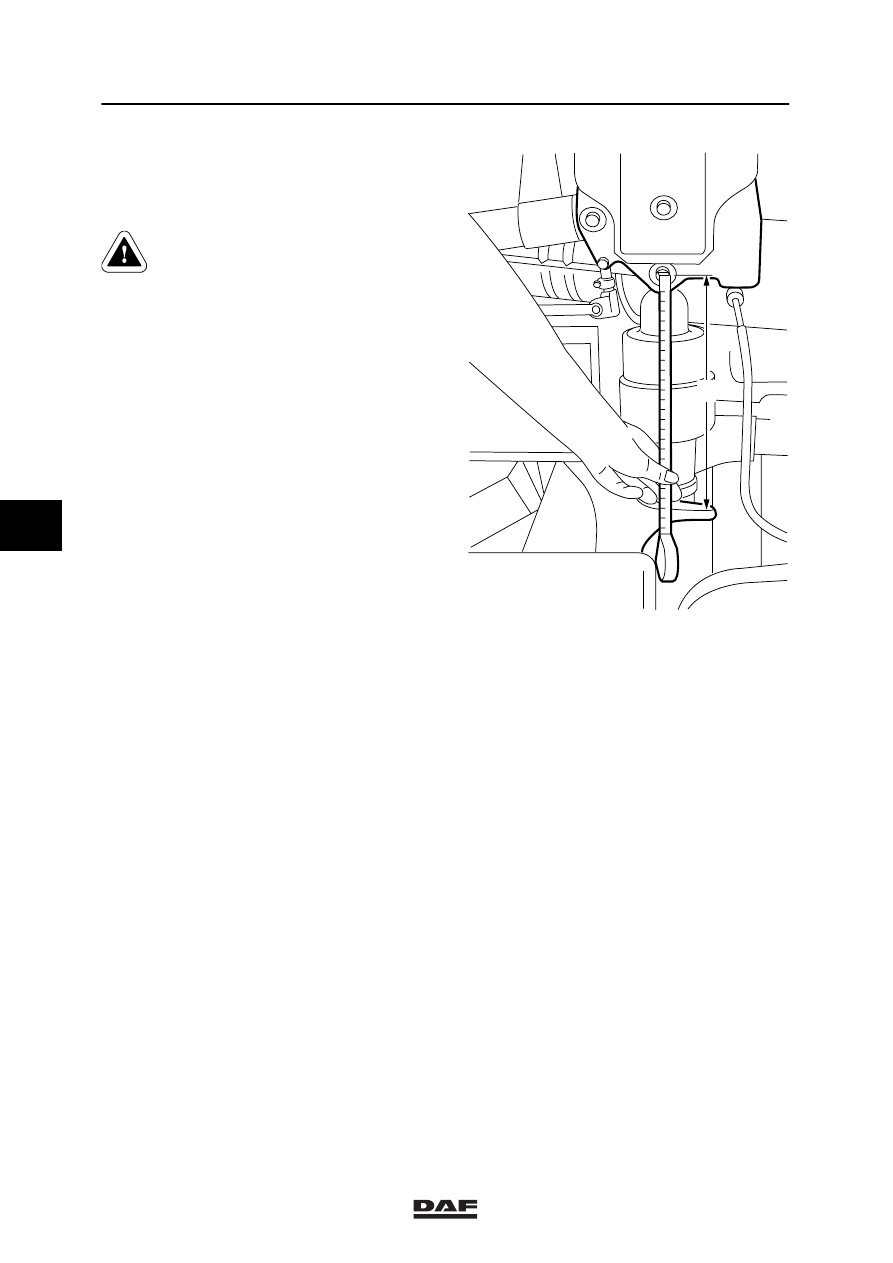DAF 95XF. Manual - part 834

1
CAB SUSPENSION
Inspection and adjustment
3-4
Inspecting and adjusting rear cab
suspension
1.
Bring the system up to maximum service
pressure.
Risk of being trapped when cab
suspension is vented.
2.
Vent the cab suspension using the height
control valves.
3.
Then allow the height control valve to raise
the cab to the proper height and measure
distance “B” between the top of the bracket
and the centre of the attachment bolt.
4.
If this height must be adjusted, loosen the
attachment bolts of the height control valve.
After this, the height can be adjusted by
changing the position of the valve. For the
setting value, see “Technical Data”.
Note:
The air bellows must be vented before each
new measurement. After this, the height control
valve will adjust to the set height.
K100349
B
5
ᓻ 0209